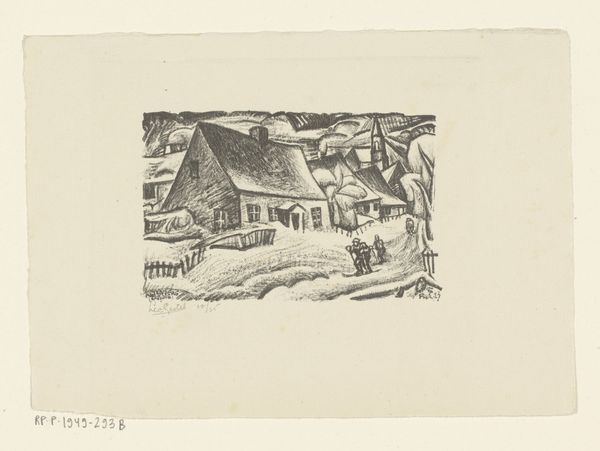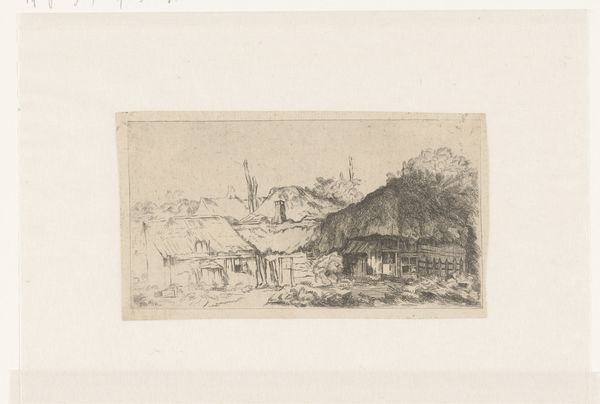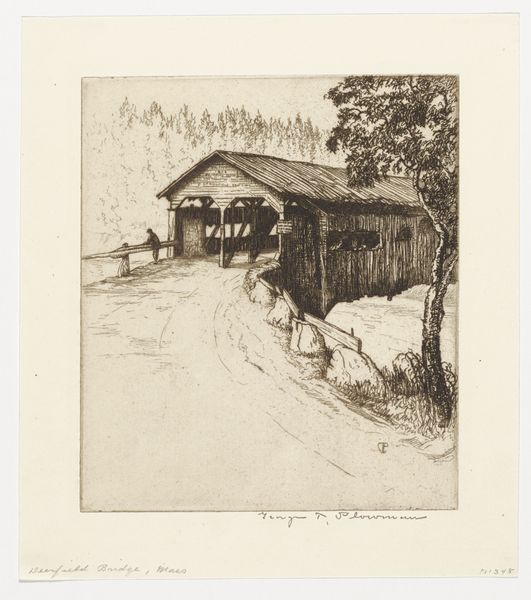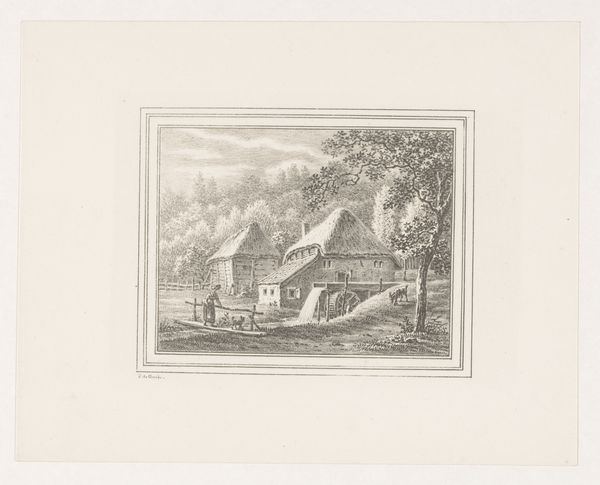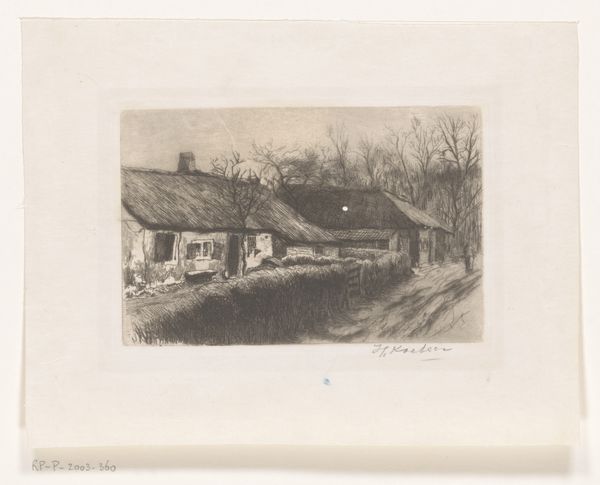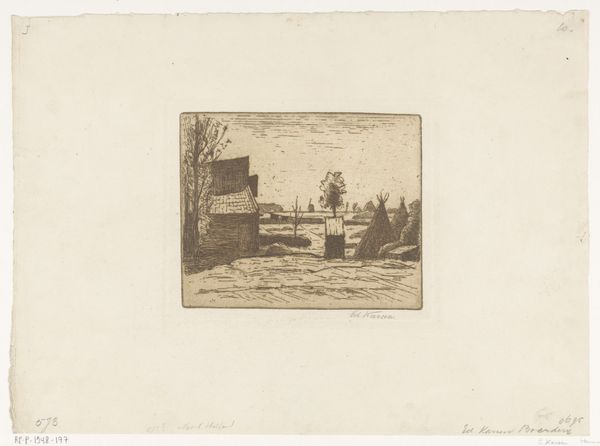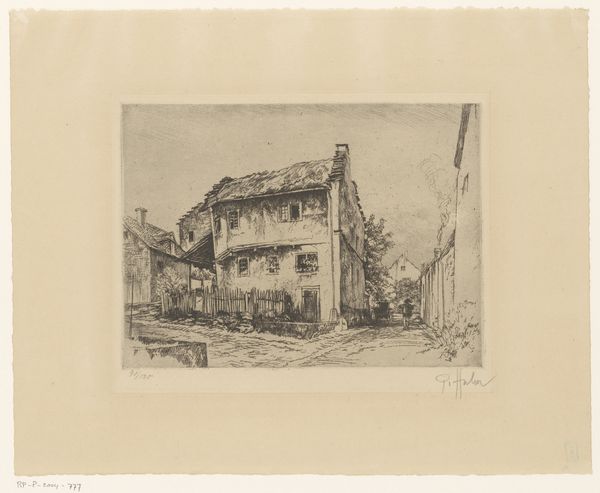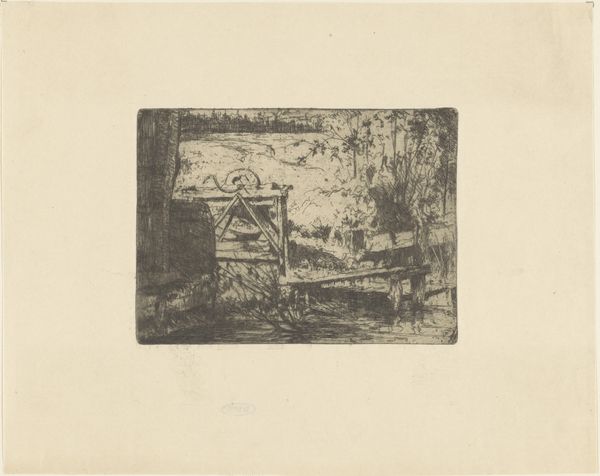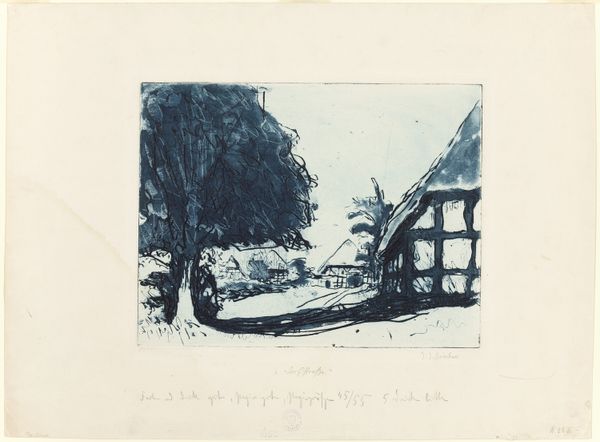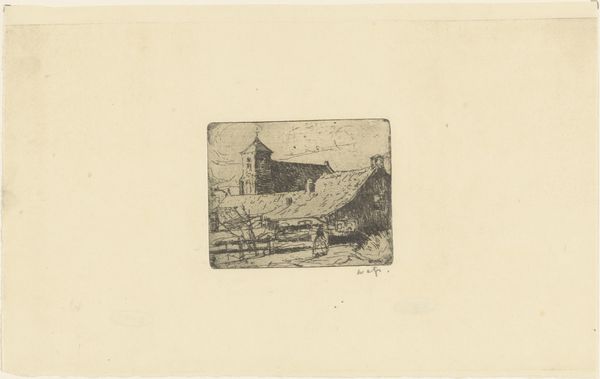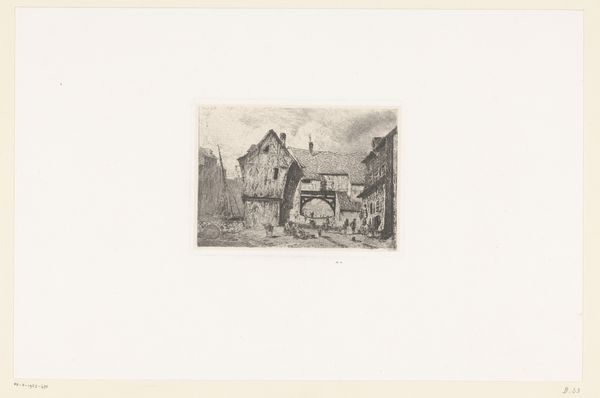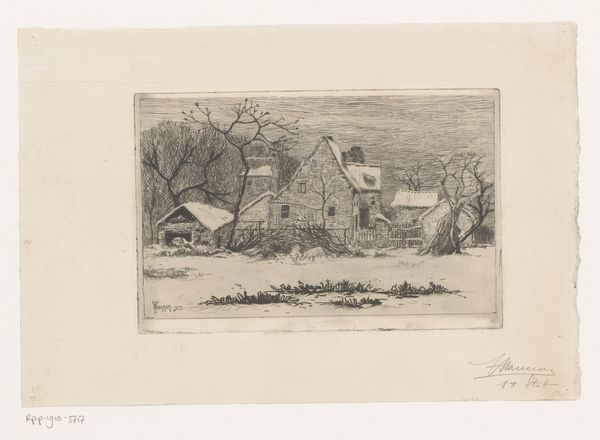
drawing, lithograph, print
#
drawing
#
lithograph
# print
#
landscape
#
expressionism
Dimensions: height 130 mm, width 170 mm
Copyright: Rijks Museum: Open Domain
Curator: Welcome. Here at the Rijksmuseum, we have a striking lithograph titled "Altenberg (Ertzgeberte)," crafted in 1923 by Leo Gestel. Editor: My initial reaction is that this landscape has a raw, almost unsettling starkness. The heavy lines and the stark contrast really create a sense of isolation. It looks like a harsh place. Curator: Gestel was deeply engaged with Expressionism. He wanted to translate personal emotion and internal psychological realities, so it is very likely that the gloom you feel when observing this piece reflects Europe in the early 20's: post war malaise mixed with some sense of hopeful reconstruction. Editor: Absolutely. I'm thinking about the rise of industrialization and its impact on rural communities during that time. The dense buildings huddled together perhaps suggest vulnerability amidst wider social changes. Are the inhabitants escaping something or gathering strength in those hard times? Curator: It’s interesting you say that. In my opinion, while there's undoubtedly an undercurrent of social anxiety there's an element of stoicism too, visible in the figures braving the snow. Editor: A crucial consideration lies within Gestel's choices. Why lithography? The texture achieved with the stone creates this grainy, almost oppressive feel; the bare winter trees are also really telling. This image reads like a critical engagement with modern life, questioning its promises against this backdrop of nature that almost appears hostile. Curator: A strong point. Art's societal commentary frequently employs contrasting imagery. And as for his artistic decisions, consider his focus on printmaking and lithography. He seemed to lean away from oils in the aftermath of WWI. He explored techniques that allowed wider access and arguably had an intrinsically egalitarian nature. Editor: Thank you, understanding his intentions shifts my perspective. It feels less fatalistic now and a bit more like a social commentary, perhaps calling for empathy amid widespread hardship. Curator: Exactly! This examination of "Altenberg (Ertzgeberte)" by Gestel opens up critical questions of place, purpose, and perseverance which remain as pertinent now as when it was made a century ago. Editor: A timely encounter. I am left pondering our modern responses to communal crises against Gestel’s depiction of endurance.
Comments
No comments
Be the first to comment and join the conversation on the ultimate creative platform.
